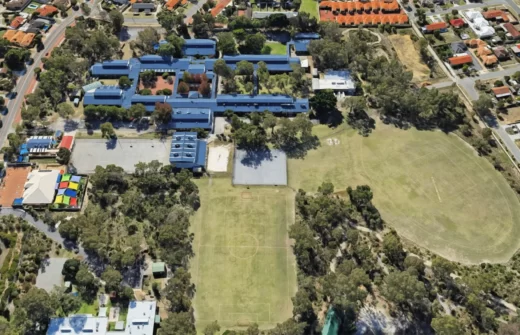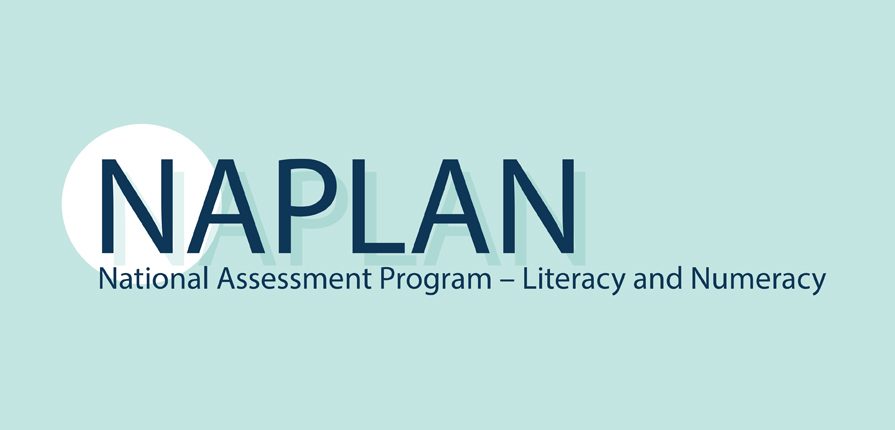Your child will do the NAPLAN tests online
Federal, state and territory education ministers agreed that all schools will gradually transition from the current paper-based NAPLAN to NAPLAN Online in order to provide a better and more precise assessment that is more engaging for students.
State and territory education authorities will determine when their schools move online. The current plan is for all schools to transition to NAPLAN Online by 2022.
One of the main benefits of NAPLAN Online is tailored (or adaptive) testing, in which the test presents questions of higher or lower complexity depending on a student’s performance.
Tailored (or adaptive) testing is designed to assess a wider range of student abilities and to measure student achievement more precisely. Your child should not be concerned if they find questions more challenging than usual; they may be taking a more complex test pathway. A student’s overall NAPLAN score is based on the number and complexity of questions they answer correctly.
Why do students do NAPLAN?
The National Assessment Program – Literacy and Numeracy (NAPLAN) assesses literacy and numeracy skills that are essential for every child to progress through school and life.
Students in Years 3, 5, 7 and 9 participate in the annual NAPLAN tests in reading, writing, conventions of language (spelling, grammar and punctuation) and numeracy.
The assessment provides parents and schools with an understanding of how individual students are performing at the time of the tests. NAPLAN is just one aspect of a school’s assessment and reporting process – it does not replace ongoing assessments made by teachers about student performance.
NAPLAN also provides schools, education authorities and governments with information about how education programs are working and whether young Australians are achieving important educational outcomes in literacy and numeracy.
What does NAPLAN assess?
NAPLAN assesses literacy and numeracy skills that students are learning through their regular school curriculum. All government and non-government education authorities have contributed to the development of NAPLAN materials.
Students are assessed on the same literacy and numeracy curriculum content, regardless of whether they complete the tests online or on paper. Results for both formats can be reported on the same NAPLAN assessment scale.
To find out more about NAPLAN Online, visit nap.edu.au
What can I do to support my child?
On its own, NAPLAN is not a test that can be studied for and students are not expected to do so.
You can support your child by reassuring them that NAPLAN is just one part of their school program, and by reminding them on the day to simply do their best.
ACARA does not recommend excessive preparation for NAPLAN or the use of services by coaching providers.
Ensuring students are familiar with using devices, typing on them and navigating through programs is a part of student learning and a requirement of the Australian Curriculum from the first year at school.
NAPLAN Online is not a test of keyboard skills. There are variations in how fast and well a student can type – just as there are variations in how fast and well a student can write by hand. Year 3 students will complete the writing test on paper.
Teachers will ensure students are familiar with the types of questions in the tests and will provide appropriate support and guidance.
See the types of questions and related functionalities available in the NAPLAN Online assessment at nap.edu.au/online-assessment/public-demonstration-site
Participation in NAPLAN
All students in Years 3, 5, 7 and 9 are expected to participate in the annual NAPLAN assessment. Students with disability may qualify for adjustments that reflect the support normally provided for classroom assessments. You should discuss the use of any adjustments for your child with your child’s teacher.
A student with a disability that severely limits their capacity to participate in the assessment, or a student who has recently arrived in Australia and has a non-English speaking background, may be granted a formal exemption.
Your school principal and your local test administration authority can give you more information on special provisions or the process required to gain a formal exemption.
What if my child is absent from school on NAPLAN days?
Where possible, schools may arrange for individual students who are absent at the time of testing to complete missed tests at another time during the school’s test schedule.
NAPLAN Online timetable
The assessment window for NAPLAN Online is nine days instead of the three days provided for the paper test. This is to give schools flexibility in scheduling and accommodate schools that may have fewer devices.
The NAPLAN Online assessment window starts on Tuesday 11 May and finishes on Friday 21 May 2021.
The online test scheduling requirements are detailed in the table below.
| Test | Scheduling requirements | Duration | Test description |
|---|---|---|---|
| Writing | Year 3 students do a paper-based writing test (on day 1 only) Year 5 must start on day 1 (schools must prioritise completion of writing across days 1 and 2 only) Years 7 and 9 must start on day 2 (schools must prioritise completion of writing across days 2 and 3 only) | Year 3: 40 min. Year 5: 42 min. Year 7: 42 min. Year 9: 42 min. | Students are provided with a ‘writing stimulus’ (sometimes called a ‘prompt’ – an idea or topic) and asked to write a response in a particular genre (narrative or persuasive writing) |
| Reading | To ensure online schools are able to complete NAPLAN tests within the nine-day testing window, Years 7 and 9 students can start with reading on day 1; however, writing must start on day 2 as the writing test takes priority over any rescheduled reading tests from day 1 To be completed before the conventions of language test | Year 3: 45 min. Year 5: 50 min. Year 7: 65 min. Year 9: 65 min. | Students read a range of informative, imaginative and persuasive texts and then answer related questions |
| Conventions of language | To be completed after the reading test | Year 3: 45 min. Year 5: 45 min. Year 7: 45 min. Year 9: 45 min. | This test assesses spelling, grammar and punctuation |
| Numeracy | To be completed after the conventions of language test | Year 3: 45 min. Year 5: 50 min. Year 7: 65 min Year 9: 65 min. | This test assesses number and algebra, measurement and geometry, and statistics and probability |
How is my child’s performance reported?
Individual student performance is shown on a national achievement scale for each assessment. A result at the national minimum standard indicates that the student has demonstrated the basic literacy and numeracy skills needed to participate fully in that year level.
A NAPLAN individual student report will be issued by your child’s school later in the year. If you do not receive a report, you should contact your child’s school.
How are NAPLAN test results used?
- Students and parents may use individual results to discuss progress with teachers.
- Teachers use results to better identify students who would benefit from greater challenges or extra support.
- Schools use results to identify strengths and areas to improve in teaching programs, and to set goals in literacy and numeracy.
- School systems use results to review programs and support offered to schools.
- The community can see average school NAPLAN results at myschool.edu.au
Where can I get more information?
For more information about NAPLAN:
- contact your child’s school
- contact your local test administration authority at nap.edu.au/TAA
- visit nap.edu.au
To learn how ACARA handles personal information for NAPLAN, visit nap.edu.au/naplan/privacy








